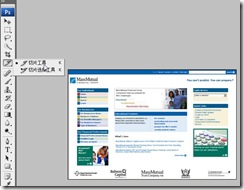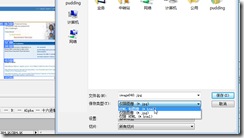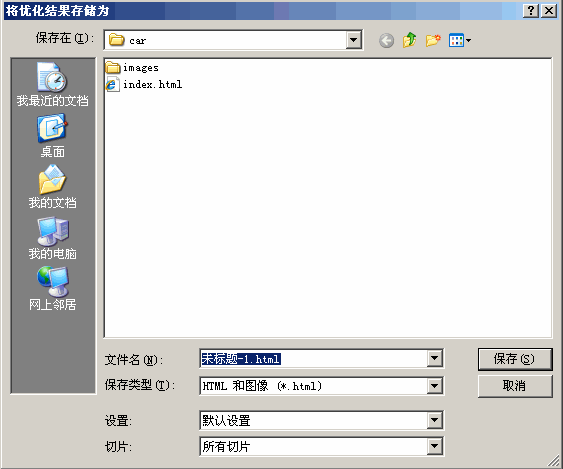photoshop切片使用教程(保存为页面与图片)
先做一个简单的说明为什么选择Photoshop软件而没有选择Firework软件。Friework Dreamweaver Flash号称网页制作三剑客,Friework与Dreamwaver整合得更为紧密,在这里只所以选择photoshop只是因为我的偏好,况且我对firework软件使用的次数很少,不太喜欢他提供的层面板。
在这里我们使用的PS的版本是CS3 以前的版本与此相差无几,但注意不能使用迷你安装版,必须是完整安装。
再说一下我们为什么要使用切片:
1 使用切片是最直白的网页布局方法。不要再想如何去设计表格,也不要想什么DIV,你首先要想的是你的网页要做成什么样子?把你所想的画出来就行了!!
2 使用切片可以有效地减小页面文件的大小,提高浏览者浏览页面的体验。想想看是把一个图片完整下载下来快,还是把一个图片分成若干个小图同时下载快呢?
如何切片:
一 打开你设计好的PS图,选择切片工具 
二 按网页的结构和图片的特点进行切片
切片的大水上和位置可以通过切片选项来进行调整 
三 选择文件菜单 另存为WEB格式命令,保存时会生成index.html 图片文件会存放在images文件夹中(CS3要选择存储为html和图片) 
四 使用Dreamweaver软件打开刚刚保存生成的html文件进行编辑,删除不必须的图片和进行内容的填充。 
切片原则和常见问题:
一 切片是生成表格的依据,切片的过程要先总体后局部,即先把网页整体切分成几个大部分,再细切其中的小部分。
二 对于渐变的效果或圆角等图片特殊效果,需要在页面中表现出来的,要单独切出来
三 在DW中进行编辑时,少用图片,如果能用背景颜色代替的就使用背景颜色 能使用图案的也尽可能使用图案平铺来形成背景
四 在DW中进行编辑时,删除图片时出面表格错位如何办?
删除图片的时候记住图片的长宽,再插入一个相同长宽的表格。
五 在DW中如何自定义表格的长宽?
使用表格长宽一样的图片做为单元格的背景。
六 如何在图片上输入文字?
把图片设置成背景。
其实我感觉很重要的两步如下:
第一步:
第二步:

Hot AI Tools

Undresser.AI Undress
AI-powered app for creating realistic nude photos

AI Clothes Remover
Online AI tool for removing clothes from photos.

Undress AI Tool
Undress images for free

Clothoff.io
AI clothes remover

Video Face Swap
Swap faces in any video effortlessly with our completely free AI face swap tool!

Hot Article

Hot Tools

Notepad++7.3.1
Easy-to-use and free code editor

SublimeText3 Chinese version
Chinese version, very easy to use

Zend Studio 13.0.1
Powerful PHP integrated development environment

Dreamweaver CS6
Visual web development tools

SublimeText3 Mac version
God-level code editing software (SublimeText3)

Hot Topics
 What are the permanently free photoshopcs5 serial numbers?
Jul 06, 2023 am 10:00 AM
What are the permanently free photoshopcs5 serial numbers?
Jul 06, 2023 am 10:00 AM
The permanently free photoshopcs5 serial numbers are: 1. 1330-1440-1602-3671-9749-7897; 2. 1330-1191-2998-6712-2520-5424; 3. 1330-1367-4285-4928-0630-3107; 4. 1330-1570-9599-9499-8092-8237; 5. 1330-1028-1662-3206-1688-5114, etc.
 Solution: Fix keyboard shortcuts not working in Photoshop
Sep 22, 2023 pm 03:17 PM
Solution: Fix keyboard shortcuts not working in Photoshop
Sep 22, 2023 pm 03:17 PM
Adobe Photoshop is the industry standard for digital design, loved and used every day by the online community. However, when keyboard shortcuts stutter or fail entirely, it can significantly slow down any project or your overall productivity on Windows 11. Whether you're an experienced designer or just dabbling in photo editing, these glitches are more than just minor annoyances in Photoshop and Photoshop CC. First, let's look at the common reasons why custom or default shortcuts stop working. Why don't my shortcuts work in Photoshop? Customize workspace settings: Sometimes, adjusting or switching between workspace settings can reset keyboard shortcuts. Sticky Keys: This accessibility feature
 Reverse sort slices using sort.Reverse function
Jul 24, 2023 pm 06:53 PM
Reverse sort slices using sort.Reverse function
Jul 24, 2023 pm 06:53 PM
Use the sort.Reverse function to reverse sort a slice. In the Go language, a slice is an important data structure that can dynamically increase or decrease the number of elements. When we need to sort slices, we can use the functions provided by the sort package to perform sorting operations. Among them, the sort.Reverse function can help us reverse sort the slices. The sort.Reverse function is a function in the sort package. It accepts a sort.Interface interface type.
 What is the method of string slicing in python
Dec 13, 2023 pm 04:17 PM
What is the method of string slicing in python
Dec 13, 2023 pm 04:17 PM
In Python, you can use string slicing to get substrings in a string. The basic syntax of string slicing is "substring = string[start:end:step]".
 What does video slicing authorization mean?
Sep 27, 2023 pm 02:55 PM
What does video slicing authorization mean?
Sep 27, 2023 pm 02:55 PM
Video slicing authorization refers to the process of dividing video files into multiple small fragments and authorizing them in video services. This authorization method can provide better video fluency, adapt to different network conditions and devices, and protect the security of video content. Through video slicing authorization, users can start playing videos faster and reduce waiting and buffering times. Video slicing authorization can dynamically adjust video parameters according to network conditions and device types to provide the best playback effect. Video slicing authorization also helps protect The security of video content prevents unauthorized users from piracy and infringement.
 Introduction to the method of deleting elements in a slice using Go language
Apr 02, 2024 pm 05:33 PM
Introduction to the method of deleting elements in a slice using Go language
Apr 02, 2024 pm 05:33 PM
There are three methods to remove slice elements in Go language: append function (not recommended), copy function and manually modifying the underlying array. The append function can delete tail elements, the copy function can delete middle elements, and manually modify the underlying array to directly assign and delete elements.
 An in-depth discussion of the memory allocation and expansion strategies of Golang slices
Jan 24, 2024 am 10:46 AM
An in-depth discussion of the memory allocation and expansion strategies of Golang slices
Jan 24, 2024 am 10:46 AM
In-depth analysis of Golang slicing principle: memory allocation and expansion strategy Introduction: Slicing is one of the commonly used data types in Golang. It provides a convenient way to operate continuous data sequences. When using slices, it is important to understand its internal memory allocation and expansion strategies to improve program performance. In this article, we will provide an in-depth analysis of the principles of Golang slicing, accompanied by specific code examples. 1. Memory structure and basic principles of slicing In Golang, slicing is a reference type to the underlying array.
 How to modify the value of a slice in golang
Jan 05, 2023 pm 06:59 PM
How to modify the value of a slice in golang
Jan 05, 2023 pm 06:59 PM
Modification method: 1. Use the append() function to add new values, the syntax is "append(slice, value list)"; 2. Use the append() function to delete elements, the syntax is "append(a[:i], a[i+N" :]...)"; 3. Reassign the value directly according to the index, the syntax is "slice name [index] = new value".






